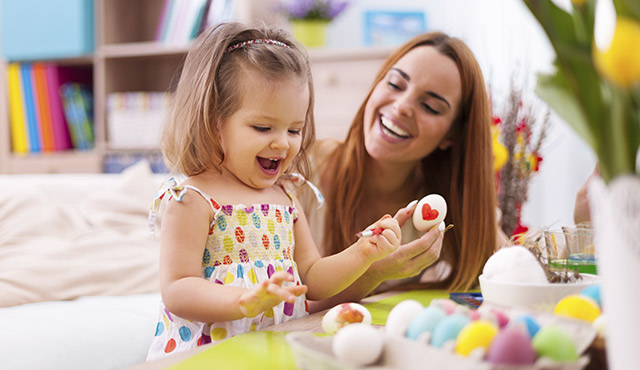Like any other holiday, Easter is rife with symbols: The Easter Bunny, Easter eggs, Easter candy, Easter baskets and Easter lilies each have meaning and purpose, some of which are culturally based and others that have deep spiritual significance to us as Catholic Christians.
Understanding Easter symbols helps us communicate not only the embedded meaning within the symbols, but also our feelings of belonging to Christian culture. In describing the meaning of Easter symbols to our children, we share Catholic tradition as well as the beloved stories that are the bedrock of our faith.
Rabbits, known to be prolific procreators, are an ancient symbol of fertility and new life. German immigrants to America reportedly brought stories of an egg-laying hare known as “Osterhase” or “Oschter Haws”; thus was the Easter bunny introduced to our culture. It has become a prominent symbol of Christianity’s most important holiday. German children made nests in which the creature could lay its colored eggs. Eventually the custom spread across the U.S. and the rabbit’s Easter morning deliveries expanded to include chocolate and other types of candy and gifts, and decorated baskets replaced nests.
Christians view Easter eggs, symbolizing the new life that returns to nature in the spring, as a reminder of the tomb from which Jesus arose.
“Easter eggs have a lengthy tradition as an Easter symbol within the Christian church, both east and west,” noted Monsignor Art Holquin, Rector Emeritus at the Mission Basilica in San Juan Capistrano. “The Easter egg is the symbol of transformation and new life from an apparently inanimate object. You’d never know what’s going on inside, just as when you look at the outside of the tomb you assume there are only dead bones inside. But new life breaks forth from the egg, and obviously that is the symbol of the Resurrection, coming forth from something that appears dead and inanimate.”
Monsignor Holquin says that in the Ukrainian Church the custom of highly decorated eggs continues. Ukranian eggs, known as pysanky, are decorated with traditional folk designs using a wax-resist method. Other Eastern ethnic groups decorate eggs in this manner, including the Belarusians, Bulgarians, Croats, Czechs, Hungarians, Russians, Serbs, Slovaks and Slovenes.
Among the most popular sweet treats associated with Easter are chocolate eggs, which date back to early 19th century Europe, and jellybeans, which became associated with Easter in the 1930s.
“Chocolate merely is another way of portraying the Easter egg, something rich and beautiful that gives pleasure to our taste buds,” Monsignor Holquin says. “It’s a foretaste of the gift of the Resurrection to us, far beyond something delicious but which transforms our lives completely and promises us a life of happiness forever with Christ.”
In New York, the Easter Parade tradition dates back to the mid-1800s when the upper crust of society would attend Easter services at various Fifth Avenue churches and stroll outside afterward, showing off their new spring outfits and hats. The parade lives on in Manhattan, and while it bears no religious significance, Easter processions have long been part of Christianity.
Other Easter symbols include Easter lilies, shaped like trumpets symbolizing immortality; butterflies, which undergo a metamorphosis and emerge into a new and beautiful form; the Lamb, a symbol associated with Jesus; and lights and candles, including the Pascal Candle or Easter Candle, lit on Easter Sunday.

